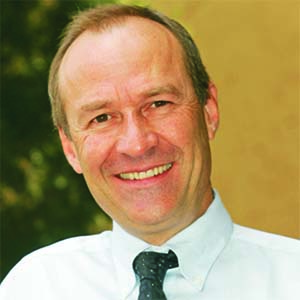The first Formula One race counting towards the drivers’ world championship was held at Silverstone in England in May 1950. Today, the British Grand Prix at Silverstone is one of the jewels in F1’s crown along with events at circuits still in use from those early days including Spa-Francorchamps, Monza and Monaco.
 By Graham Duxbury
By Graham Duxbury
Together with the Hockenheimring in Germany and Suzuka in Japan – with its unique figure-eight layout – they represent the classic circuits on the today’s F1 calendar. Despite many being revised over time, they are still seen as supreme “old-school” driving challenges. Importantly, they also embody the hard-to-define “magic atmosphere” that’s only present in timeless edifices like these.
Back in the day, many classic circuits made use of public roads, closed for the race. Hazards included houses, trees, electric poles, ditches and other obstacles located next to the track. Before the 1970s, only scant attention was paid to safety. Since then, and particularly after the Ayrton Senna tragedy in 1994, safety has become an increasingly important topic.
Barriers were erected, run-off areas were increased and service roads appeared. Corners deemed dangerous were revised, or preceded by chicanes. Long circuits presenting marshalling and ambulance access challenges were dramatically shortened.
The man responsible for many of the radical design overhauls is Herman Tilke, the German-born engineer who is F1’s “go-to” circuit designer. He has also designed new-generation circuits in Malaysia, Bahrain, China, Turkey, Singapore, Abu Dhabi, Russia, India, Azerbijan, South Korea and the US.
He is currently working on new circuits for Kuwait and Viet Nam, countries hoping to host F1 races in future. According to Tilke, he works towards “conceiving dramatic architecture that reflects the host country.” A good example of which is the track layout of the Shanghai International circuit, inspired by the Chinese character shang.
Tilke’s tracks are the subject of criticism. Sometimes referred to as Tilkedromes to emphasis their “boring sameness”, his tracks have been blamed for a lack of excitement and “going too far” in terms of safety with large tarmac run-off areas that fail to penalise driver errors.
While I agree that some of Tilke’s designs have failed – the Yas Marina circuit in Abu Dhabi boasts a series of boring, 90-degree off-camber corners – others have met their design objectives.
For example, Tilke’s Sepang circuit in Malaysia and his Istanbul Park circuit in Turkey – with its challenging, highspeed quadruple left-hand apex curve – represent some of his best work. Sadly, they are no longer on the F1 calendar.
Today, the future of many of the classic circuits is in doubt. The costs of hosting a GP have risen considerably and traditional circuits such as Silverstone and Monza, without any financial assistance from governments, are in trouble.
With more Tilke-designed circuits on the way, F1 is in danger of turning its back on the classic, mainly-European venues and the thousands of fans that flock to F1’s heritage events.
Recently the Formula One Promoters’ Association (FOPA), which represents 16 of the sport’s existing venues, expressed concern over a lack of clarity over new initiatives and the introduction of new venues at the expense of races with a long tradition on the calendar.
I believe F1 should carefully consider the value of its traditional venues. What would tennis be without Wimbledon, or cricket without the MCG? One way for F1’s new owners, Liberty Media, to ensure the future of financially-challenged classic circuits would be to introduce a risk-sharing/ profit-sharing mechanism with the promotors.
Such a solution has been proposed for a street race in Miami in 2020 which is in line with Liberty’s vision of promoting races in “landmark cities” in America. New York, Los Angeles and Las Vegas are also on Liberty’s radar.
This potential deal has prompted talk of holding more races on temporary street circuits as an option for new promotors who could join the F1 circus “on the cheap” without the need for costly, purpose-built facilities.
Nevertheless, there should be no rush to add more street circuits to the F1 calendar. They often encourage processional racing within the tight confines of narrow, concrete-lined avenues. Let’s leave the city centres to those uninspiring, noiseless Formula-e cars.
Is F1 up to the challenge of maintaining a meaningful balance between the classic venues, new Tilkedromes and temporary street tracks? Time will tell.
